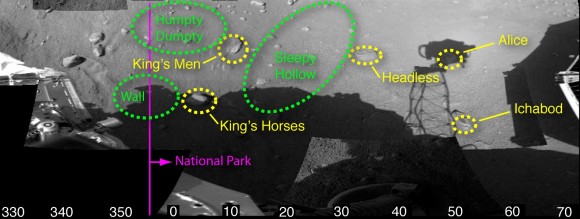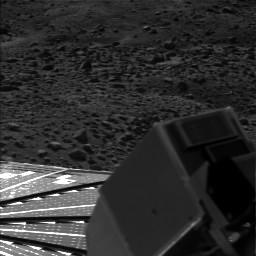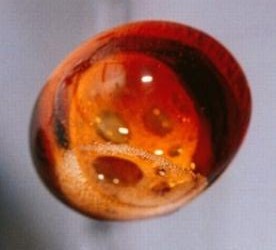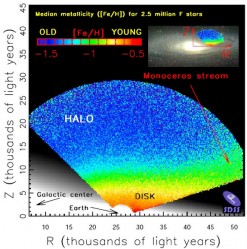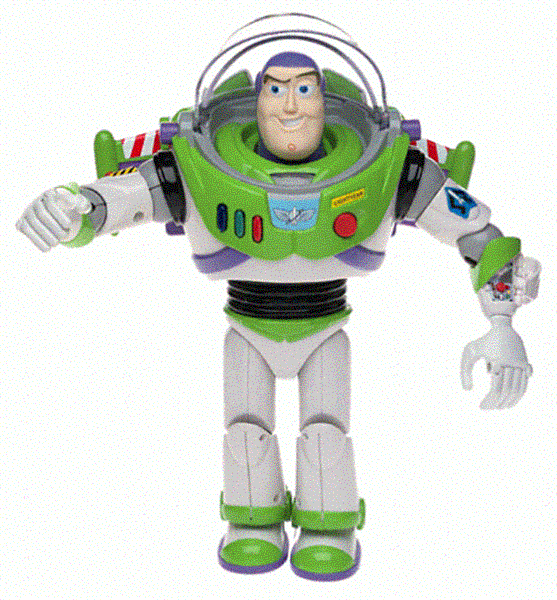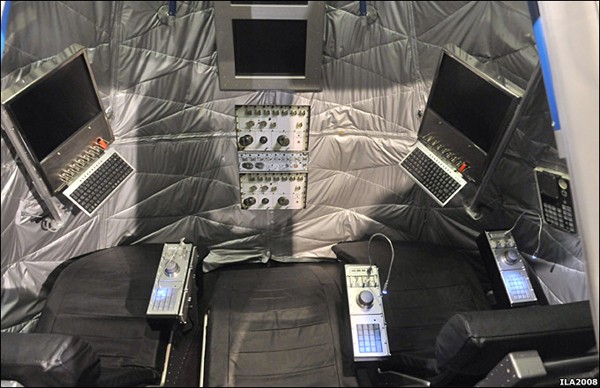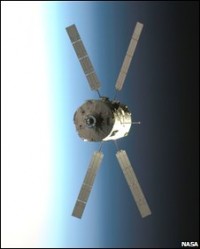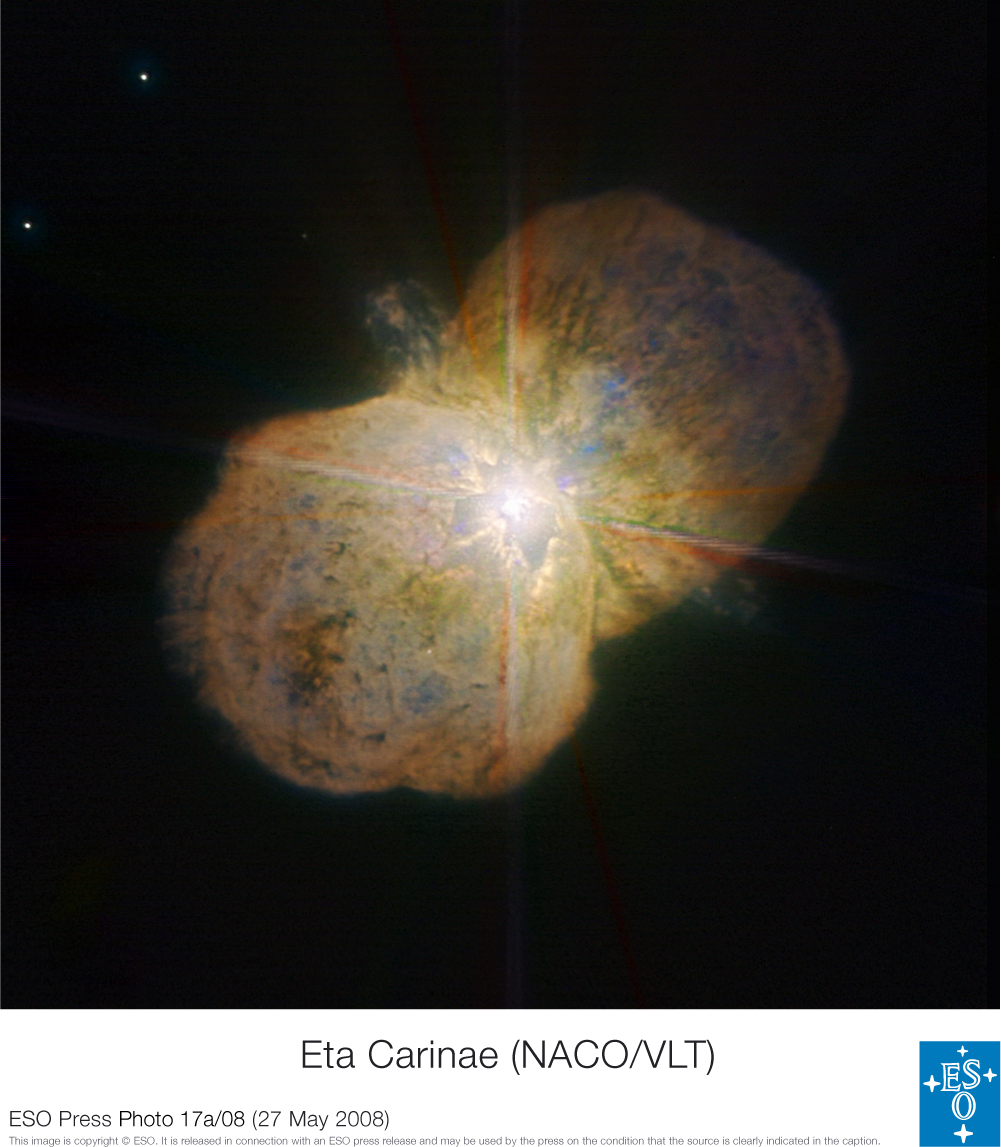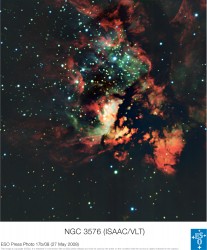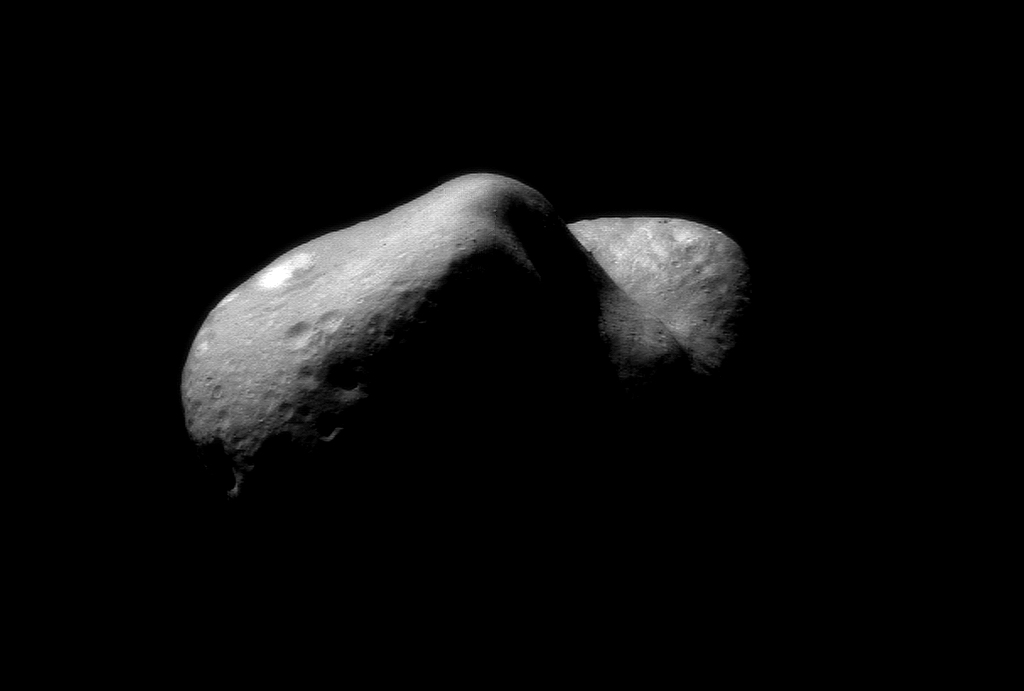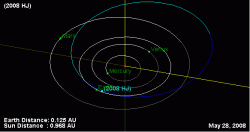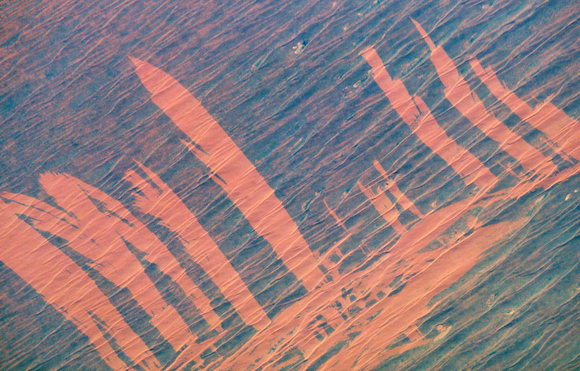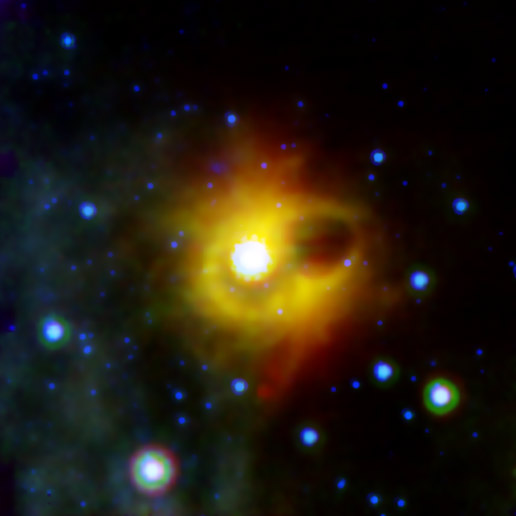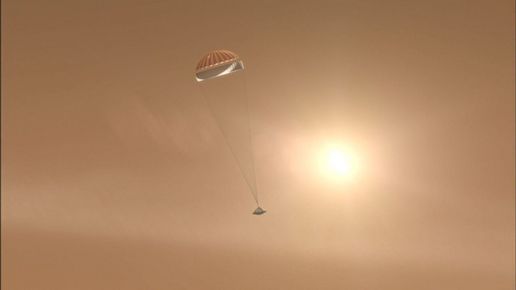Phoenix’s Surface Stereo Imager (SSI) has finished its initial survey of the area surrounding the Phoenix lander, and returned the images to Earth for completion of the first panorama, seen above. “The panorama takes your around the entire scene,” said Phoenix Principal Investigator Peter Smith. “We see this “hummocky” terrain, with troughs in between the hummocks. In the background we can see the backshell and parachute.” Also visible are disturbances in the soil caused by the landing. And one of the most important aspects of the image shows the robotic arm now up and off the lander, with its scoop in the ready position. Flight Software Lead Matt Robinson reported, “The arm is busted loose now and is raring to go!”
Robinson said the arm is now unstowed out of all its launch restraints, and it required movement from all four of the joints to break loose of the bio-barrier that covered the arm during its journey from Earth. However, it will probably be next week before any digging is done with the arm. The team will first need to determine the stability of the lander. The camera on the end of the arm will look up under the lander to make sure everything is stable, and that each footpad is secure.
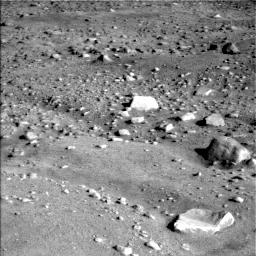
Smith said the rocks in the area are fist size, and there are ample places between the rocks to dig down to look for the ice layer thought to lie beneath the Martian surface. Data from the Odyssey spacecraft has indicated water in the form of ice lies beneath the Mars arctic region. Smith added that smaller rocks can be moved by robotic arm, if necessary, to get a good place to dig.
As customary, the science team has begun naming the rocks in the area to help distinguish them, and are using themes from fairy tale characters from Humpty Dumpty, The Legend of sleepy hollow, and Alice in Wonderland.
The “scoop” on the end of Phoenix’s robotic arm is now up and off the lander.
Science team is looking at the patterns in the rocks, and patterns in how they are distributed around the hummocks and troughs. “We do not have a full spectral analysis of any of the rocks, so its early to say anything about their composition,” Smith said. “That’s high on our list of things to do.” He added that the 12 spectroscopic filters on the SSI should be able to tell us if they are the same as the five other locations we’ve studied on Mars. He also offered a couple of clues about the rocks: Many are flat like paving stones, which may be a clue to their origin, and the rocks seem to be brighter than the surface rather than darker.
The SSI can also be used to create stereoscopic images that allow them to get elevation information. Additionally, the camera on the end of the arm, while not stereoscopic, can take one image and then be moved slightly to create stereoscopic images. The suite of science instruments on the arm also includes a microscopic imager with resolution 6 times better than the MER instruments.
Asked how he thought the mission has been going so far, Phoenix project manager Barry Goldstein said, “We’ve exceeded even our optimistic goals.”
And now, here’s the latest weather report from the Phoenix landing site:
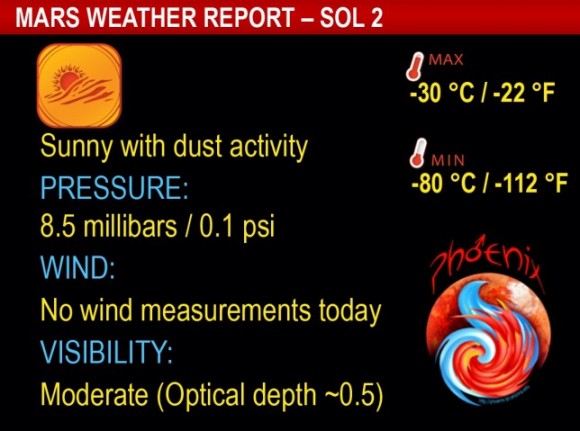
Quicktime hi-res movie of the terrain to the northwest of the Phoenix lander.
Link for Mars Weather Widget — Get Mars Weather on your desktop!
Image sources: Phoenix Gallery


